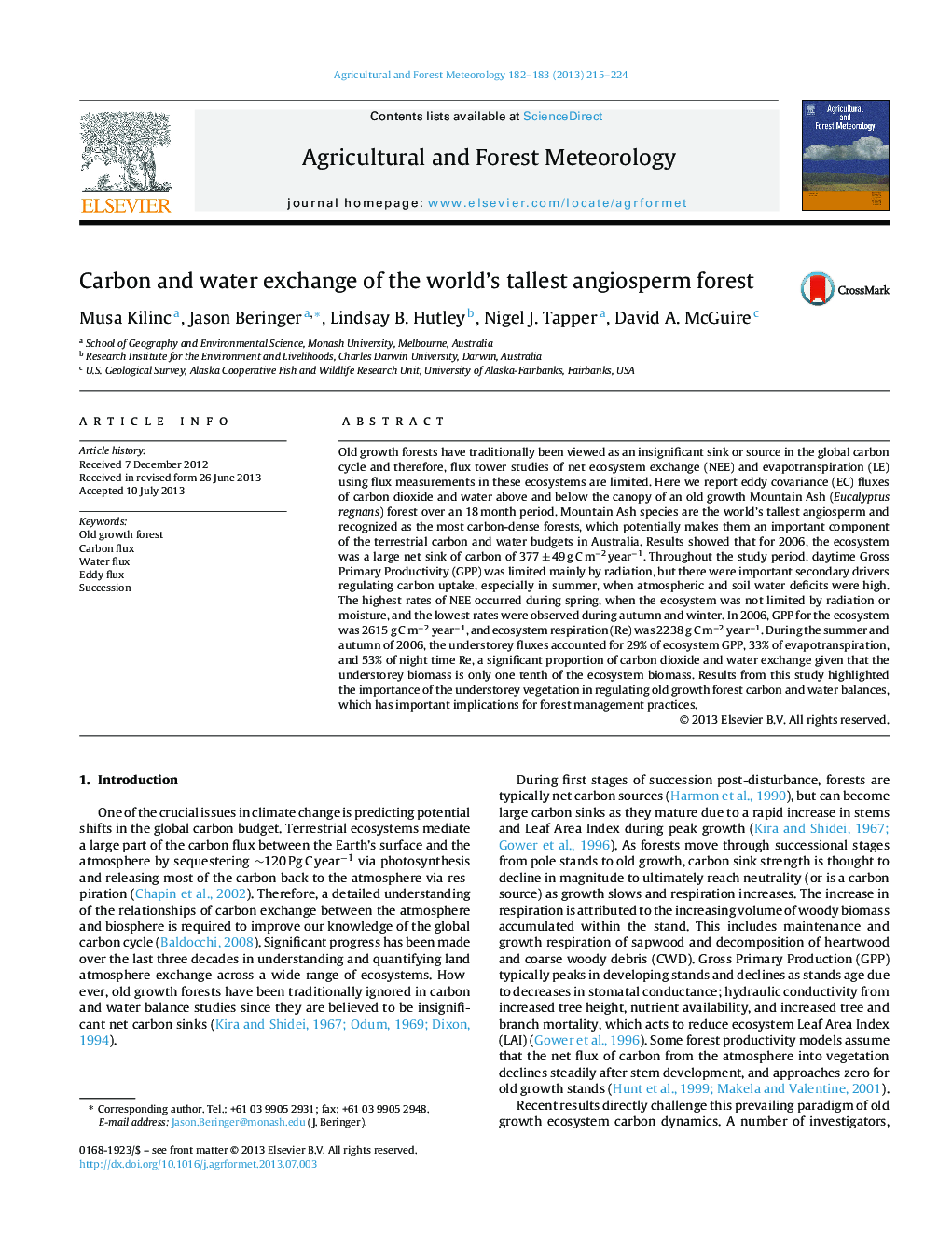| کد مقاله | کد نشریه | سال انتشار | مقاله انگلیسی | نسخه تمام متن |
|---|---|---|---|---|
| 6537750 | 158343 | 2013 | 10 صفحه PDF | دانلود رایگان |
عنوان انگلیسی مقاله ISI
Carbon and water exchange of the world's tallest angiosperm forest
ترجمه فارسی عنوان
تبادل کربن و آب از بلندترین جنگل های انجیر در جهان است
دانلود مقاله + سفارش ترجمه
دانلود مقاله ISI انگلیسی
رایگان برای ایرانیان
کلمات کلیدی
موضوعات مرتبط
مهندسی و علوم پایه
علوم زمین و سیارات
علم هواشناسی
چکیده انگلیسی
Old growth forests have traditionally been viewed as an insignificant sink or source in the global carbon cycle and therefore, flux tower studies of net ecosystem exchange (NEE) and evapotranspiration (LE) using flux measurements in these ecosystems are limited. Here we report eddy covariance (EC) fluxes of carbon dioxide and water above and below the canopy of an old growth Mountain Ash (Eucalyptus regnans) forest over an 18 month period. Mountain Ash species are the world's tallest angiosperm and recognized as the most carbon-dense forests, which potentially makes them an important component of the terrestrial carbon and water budgets in Australia. Results showed that for 2006, the ecosystem was a large net sink of carbon of 377 ± 49 g C mâ2 yearâ1. Throughout the study period, daytime Gross Primary Productivity (GPP) was limited mainly by radiation, but there were important secondary drivers regulating carbon uptake, especially in summer, when atmospheric and soil water deficits were high. The highest rates of NEE occurred during spring, when the ecosystem was not limited by radiation or moisture, and the lowest rates were observed during autumn and winter. In 2006, GPP for the ecosystem was 2615 g C mâ2 yearâ1, and ecosystem respiration (Re) was 2238 g C mâ2 yearâ1. During the summer and autumn of 2006, the understorey fluxes accounted for 29% of ecosystem GPP, 33% of evapotranspiration, and 53% of night time Re, a significant proportion of carbon dioxide and water exchange given that the understorey biomass is only one tenth of the ecosystem biomass. Results from this study highlighted the importance of the understorey vegetation in regulating old growth forest carbon and water balances, which has important implications for forest management practices.
ناشر
Database: Elsevier - ScienceDirect (ساینس دایرکت)
Journal: Agricultural and Forest Meteorology - Volumes 182â183, 15 December 2013, Pages 215-224
Journal: Agricultural and Forest Meteorology - Volumes 182â183, 15 December 2013, Pages 215-224
نویسندگان
Musa Kilinc, Jason Beringer, Lindsay B. Hutley, Nigel J. Tapper, David A. McGuire,
